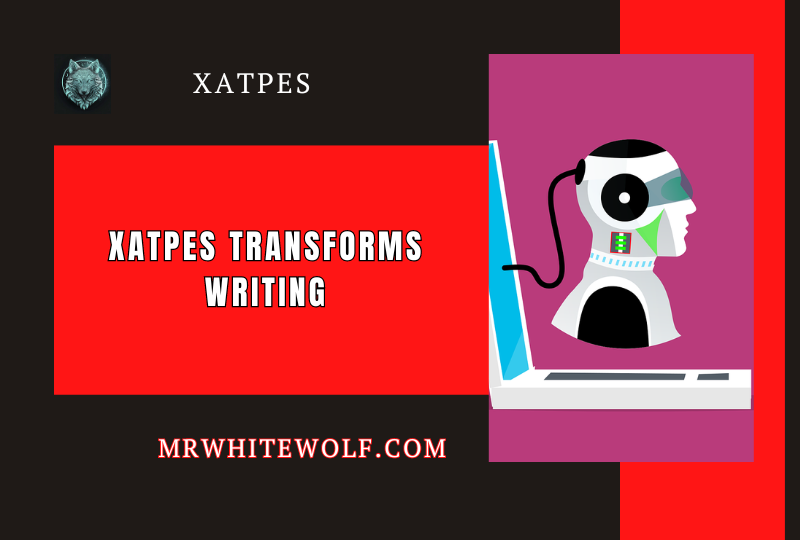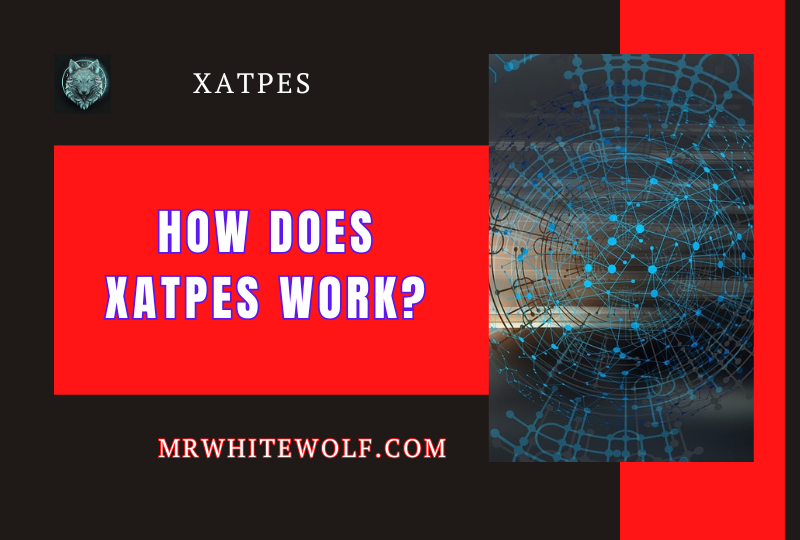FOR SALE
+92-300-1900991
FOR SALE
+92-300-1900991


Artificial intelligence is transforming industries across the board, and writing is no exception. As natural language processing (NLP) evolves, AI-powered writing assistants are emerging to help writers write better content more effectively. One of the most innovative AI-powered writing tools on the market is XATPES. This revolutionary technology enhances the entire writing process with features such as contextual analysis, language understanding, predictive suggestions, and user feedback. In this article, we’ll take a look at how XATPES has revolutionized writing and provided powerful benefits to users.
XATPES is an AI-powered writing assistant developed by Anthropic, a leading AI security startup. It uses NLP best practices to provide real-time writing suggestions, identify errors, improve clarity, and increase productivity. Although AI-powered writing tools have been around for a few years, they feature deep contextual analysis capabilities, a strong understanding of language, and the ability to learn each writer’s individual style.
As businesses and individuals strive to produce large amounts of content, the need for AI-based writing technologies has increased significantly. Manually creating well-written, engaging content is time-consuming and difficult to scale. It comes into play to streamline the process with offline support. Writers can use their predictive power to write faster and improve quality. With every writing task, XATPES reduces friction and provides a significant increase in productivity.

Xatpes goes through a multi-step process that begins with an analysis of the physical state of the film. The system uses advanced algorithms to identify potential problems, such as stretched or damaged belts, allowing technicians to make necessary repairs before the digitization process begins.
Once the cassette is analyzed and prepared, it is carefully translated into a suitable digital format such as CD or MP3. Unlike traditional methods, where the original recordings can be altered or damaged during transmission, X
The history and development of xatpes can be traced back to the early days of recording technology. The first commercial tape recorder, called a magnetophone, was developed by AEG in Germany in the 1930s. This revolutionary device used a thin strip of plastic coated with a magnetizing substance to replace conventional, bulky metal gramophone records.
Read More: How to Remove Emojis from Picture 2024
In the decades that followed, magnetic tapes were widely used to record and reproduce sounds, dominating the industry until the advent of digital technology in the 1980s. However, it wasn’t until the 1990s that xatpes made their debut and revolutionized the way people perceived music.
Xatpes are essentially cassettes with an “x” mark, indicating that they were recorded at extended playback (EP) or longplay speed (LP) rather than standard playback (SP). This was achieved by using thinner tape and slowing down the speed of the film during recording. This allowed more music to fit on one side of the cassette without sacrificing sound quality.
Xatpes, the usual specialty of arranging surfaces using a frame called conflict cover-up, has enormous societal significance in different regions of the world. From Africa to Asia, there is no doubt that this ancient art has been passed down for centuries to give an innovative soul and protect social heritage.
In every culture where Xatpes is used, it carries its shocking images and meanings. In two or three African social classes, Xatpes surfaces are worn in times of great power or in good times as a sign of character and space availability. Dissers anticipates these materials by regularly summarizing stories or conveying messages that are deeply rooted in habit.
Xatpes, a typical type of craft that begins with the associations of Ecuadorian neighbors, comes in many varieties and is made using strange methods. Each species has its own extraordinary qualities and meanings. One notable type is “Tigua” Xatpe, which emphasizes glowing tones and depicts scenes that occur in everyday life or social practices. These ksatpes are made from sheepskin, using a standard camouflage derived from plants and metals. Experts skillfully use the brushes worn by plasma hairs to provoke coordinated actions that take over the content of their lifestyle.
Shop Now: Cat Scratchers
To capture and hold your audience’s interest throughout the entire video, you need to create compelling material. These pointers will assist you in producing interesting material.
Make sure you have a clear understanding of your target market. You may create material that is especially relevant to them when you are aware of their requirements, preferences, and areas of interest. This makes it more likely that you will catch their eye in the first place.
Storytelling is a powerful engagement tool. Find creative ways to tell a story in your video that resonates with your viewers. Whether it’s personal anecdotes or interesting stories, storytelling adds depth and emotional connection to your content.
Your videos should be concise and focused. Nowadays, attention spans are shorter than ever, so try to convey valuable information quickly and efficiently without transferring it unnecessarily.
In addition, including visual elements such as images, animations, or related material can enhance the overall visual appeal of your video and effectively convey complex ideas or concepts.
Don’t forget about humor either! By adding humor to your videos, you can instantly grab attention and leave a positive impression on your viewers. However, make sure that any funny or comedic elements are consistent with the tone and purpose of your content.
Last but not least, interact with your audience! Encourage comments, questions, or comments to build an active community around your videos. A quick response shows that you value their input, which leads to increased engagement overall.
Read More: How to Play Mathsspot Roblox
It seems obvious that xatpes will continue to be significant in many cultures around the globe as we look to the future. Xatpes has the ability to flourish and expand in the upcoming years due to its rich history and distinctive artistic expression.
An exciting opportunity for the future of xatpes is its integration into digital platforms. With the advancement of technology, artists can explore new mediums and techniques to create digital Xatpe artworks. This creates countless opportunities for exploration and creativity.
In addition, with the expansion of global connectivity, there are more opportunities for collaboration between xatpe artists from different regions. This intercultural exchange can lead to new ideas, styles and interpretations of xatpes.
In addition, as awareness of traditional art forms such as hats increases, there could be a resurgence in the demand for handmade crafts. People are increasingly aware of the need to support local artisans and preserve cultural heritage. This renewed interest could provide economic opportunities for communities involved in the production of art.
But it’s crucial to remember the difficulties that xatpes will face in the future. Making sure that traditional knowledge and abilities are passed down from generation to generation is one of these issues. Both younger artists who are interested in learning these techniques and older artists who have mastered them must be dedicated to this.
In addition, sustainable development practices must be taken into account, as environmental aspects are becoming increasingly important worldwide. The search for eco-friendly materials and methods to produce Xateps will be crucial in the future.
Xatpes are more than just an art or craft form. It represents identity and cultural legacy. From its humble beginnings in ancient cultures to its transformation into modern times, Xatpes continues to fascinate and inspire people around the world.
With intricate designs and bright colors, Xatpes reflect rich traditions and stories that have been passed down from generation to generation. IIt acts as a visual language to communicate ideals, beliefs, and history. Every thread demonstrates the commitment and skill that go into creating these unique creations.
Hatpes has great cultural and historical significance for many indigenous communities around the world. It serves as a means of telling stories, preserving traditions, and connecting with ancestors.
Yes! While some indigenous communities have their own specific techniques and styles, anyone can learn the basics of xatpes and explore their creativity within this unique art form.
Traditional, natural materials such as tree bark or animal skins were used as canvases to create Xatpes artworks. Today, in addition to natural pigments made from plants or metals, artists can also use paper or canvas.
Yes! The most common technique is to fold the canvas several times before applying the paint to one side. When unfolded, you will find symmetrical patterns that often represent animals, plants or geometric shapes.
One way to show your appreciation is to purchase original artwork directly from indigenous artists who practice Xaptes. In this way, they are not only financially supported, but also contribute to the preservation of their cultural heritage.
Other Indigenous art styles, like Australian Aboriginal dot painting, Kuna molas, ceramics, and Inuit soapstone carving, are comparable to Xaptes.
[…] Read More: “XATPES TRANSFORMS WRITING” […]
[…] 7 seconds ago […]
xRxPTBemaNXwtjnWkCkbe
[…] How does Xatpes work? […]
[…] How does Xatpes work? […]
Gabrylle Kauha
Taqee Turple